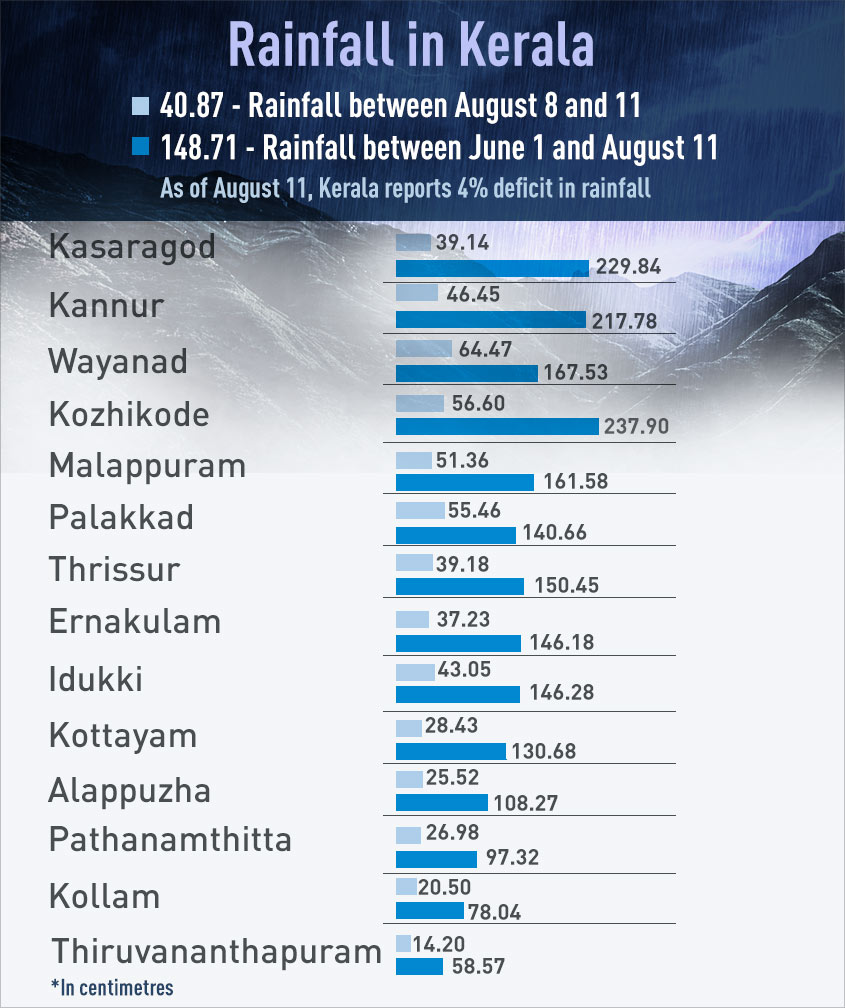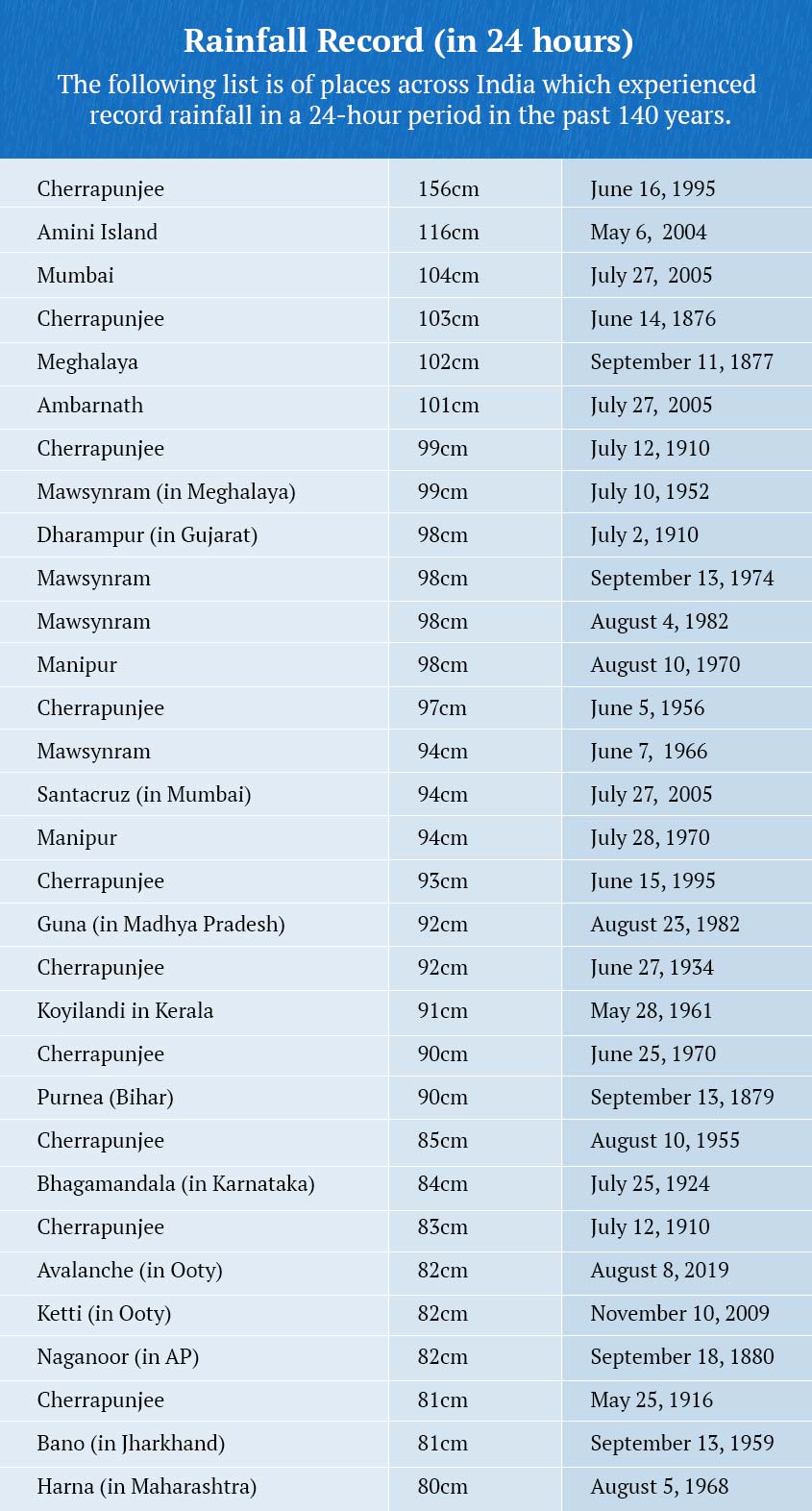As Kerala and nearby states witness extreme rains in the last few days, experts are yet to determine the likely factors behind the strange weather. The combined effect of cloudbursts and climate change is likely to have caused the extreme rainfall in Kerala that wreaked havoc across the state and claimed several lives over the past few days. The Western Ghat region, which includes parts of both Kerala and Tamil Nadu, too received record rainfall last week.
If a region receives 10 centimetres (100 millimetres) of rainfall in an hour, it is likely caused by a cloudburst. Cloudbursts had caused landslides in Uttarakhand in 2017, Jammu in 2014, and Karnataka last year.
The intensity of the rainfall over the past few days in the Western Ghat region of Kerala hinted that it could have been triggered by such a cloudburst. Wayanad and Palakkad received over 36-40 cm rainfall, while the areas adjoining the Lower Periyar dam recorded 45 cm rainfall.
About 43 cm rainfall was received in areas around the Kuttyadi dam, while 20 cm rainfall was recorded at the Sabarimala-Pamba dam region towards the south.
Record rainfall in Ooty
Ooty received around 91.1 cm rainfall for nearly 24 hours from August 7 to 8. This is inferred to be the heaviest rainfall across South India. Avalanche Lake area in Ooty received a record rainfall of 91.1 cm. This too could have been the result of a cloudburst, the experts pointed out.
Koyilandi in Kerala is said to have received around 91 cm rainfall in May 1961, putting it on the second place on the all-time records' list.
Cloud cover
Widespread rainfall between 20 to 40 cm may occur in hilly regions of Kerala if there is strong cloud cover backed by depression.
The formation of the cumulonimbus clouds had caused heavy rainfall in Kerala, said Cochin University of Science and Technology associate director Dr S Abhilash.
Normal monsoon clouds are about 4-km thick over land, but cumulonimbus clouds may attain 12-km depth and can cause thunderstorms that can trigger landslides. Further studies have to be conducted to ascertain if a cloudburst had occurred.
However, the weather department does not agree with the possibility of a cloudburst. Nor do they reject it completely. They merely categorise unusually intense rains as heavy to heavy rainfall.
Another factor
The climate change has drastically upset the monsoon patterns.
About 7 cm rainfall was received at Udumalpet in Tamil Nadu, which is considered to be a rainshadow region. This is being cited as yet another example of the changing rainfall patterns.
Thunderstorms during June-July is also considered to be a new phenomenon.
As the rainfall pattern and its destructive power rises, new studies have to be undertaken and the habitable areas of the hilly regions have to be classified.



















